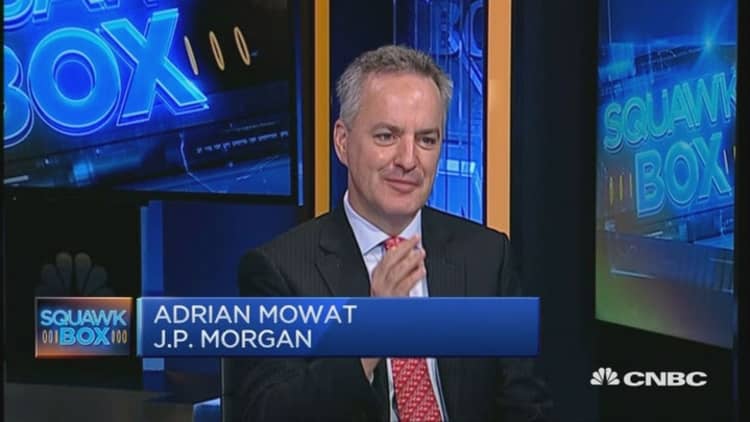Budgeting in a massive economy like India is no easy feat, but this year's task is especially tough for finance minister Arun Jaitley.
The global economy is stuttering, the is within striking distance of a record low against the dollar and investors frustrated with the government's stalling reform drive are yanking out funds from the stock market, leading to portfolio outflows of $2 billion so far in 2016, according to DBS.
All this provides a somber backdrop for Monday's annual budget, an important political event in which the government outlines its spending plans for the fiscal year (April-March in India's case), announces changes to complex tax laws and often introduces new foreign investment rules.
Jaitley must now decide whether he wants to shore up government finances or boost the country's creaky infrastructure and repair the balance sheets of state-run banks suffering from loans gone sour.
Last week, the finance ministry proclaimed the budget would make India a haven of stability amid the current global malaise. Indeed, with more than 7 percent annual economic growth in 2015, the nation stands out among both developed and emerging markets but it remains to be seen whether New Delhi can sustain that pace.
Government finances
Fiscal consolidation is perhaps the most pressing element in this year's budget. The debate is whether Jaitley should maintain the current fiscal deficit target at 3.5 percent of gross domestic product (GDP) or lift it. The former could stymie growth while the latter could push up borrowing costs.
HSBC expects Jaitley to choose a wider deficit, in the 3.6 to 3.9 percent range, to accommodate mounting spending pressures, such as the $16 billion salary hike for civil servants recommended by the Seventh Pay Commission. While that's a short-term fillip to growth, the longer-term consequences are dire.
"A higher fiscal impulse could be met with some degree of crowding out," HSBC explained in a recent report, referring to a phenomenon where higher state spending pushes up interest rates and reduces private investment.
"Moreover, public debt ratios are likely to tick higher. A credible discussion on the quality of spending and the future path of consolidation will become critical, especially because the 2017-2018 [deficit] target of 3 percent is even more challenging."
DBS economist Radhika Rao agreed, stating that any overshoot in spending beyond 3.8 to 3.9 percent of GDP would derail recent consolidation efforts-budget deficits have narrowed for the past five consecutive years-and draw the ire of rating agencies.
Moody's, which rates India at just a notch above junk status, has said it's only looking for a modest deficit reduction.
Infrastructure
The other dilemma for Jaitley is infrastructure spending, likely another key feature of Monday's budget.
Economists are concerned that the Pay Commission's endorsement for higher wages could curtail the pledging of funds to upgrade crumbling infrastructure.
Benefits to citizens aside, better railways and roads promise an economic boost as well, since infrastructure accounts for 38 percent of total industrial production, BNP Paribas estimates.

Banks
Jaitley will also have to take into consideration the recapitalization of state lenders in his planning.
The Reserve Bank of India (RBI) has demanded banks recognize bad debt by March, after which the government has promised an injection of 250 billion rupees ($4 billion) into these banks, with more expected from private capital raising.
Total stressed loans stood at $99 billion as of September, Reuters reported this week, citing official statistics.
But last month, RBI chief Raghuram Rajan asked New Delhi to more than double its contribution, pointing out that its current pledge may be inadequate.
More details on bank reform, including the seven-pronged program known as "Indradhanush" (rainbow in Hindi) and the creation of a holding company structure for state lenders, would also be welcome developments on Monday, HSBC said.
Rural development
Subdued consumer demand in rural areas is another expense factor.
Poor monsoons and weak agricultural prices have hurt purchasing power of villagers and the budget could address this by announcing safety net measures, such as crop insurance, HSBC said.
Implications
If Monday's budget is considered a success, it could mark a return of Modi mania.
"If Modi gets his budget correct, recapitalize the banks and have a target for continued growth, India represents a great opportunity for investors over the next few years," Brian Jacobsen, chief portfolio strategist at Wells Fargo Advantage Funds told CNBC this week.
"Outside of America, I would still put India up there as being one with the most opportunities ... [and] emerging Europe."



